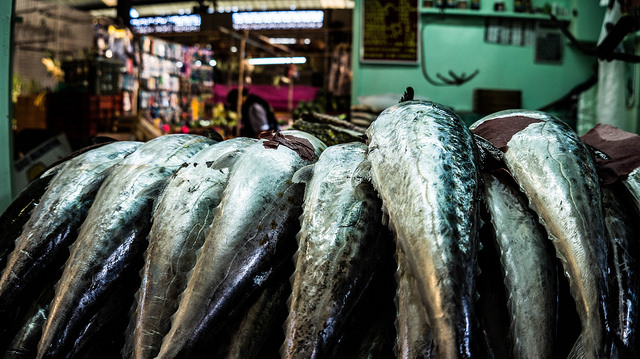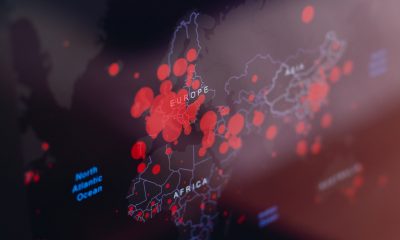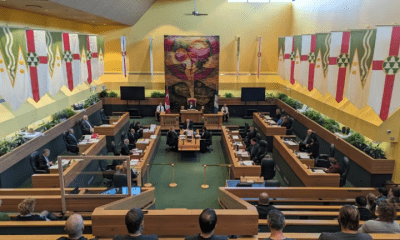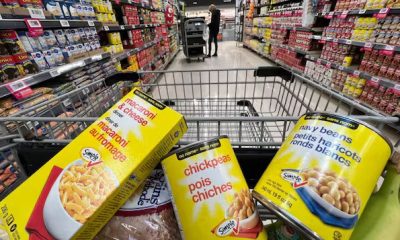Business and Economy
PHL reducing poverty in fisheries sector

“This strategy is seen to significantly reduce the incidence of poverty among fisherfolk to at least 10 percent while at the same time maximize production and improve fish sufficiency,” added Guerra. (Photo: Giulian Frisoni/ Flickr)
MANILA–The government is working vigorously to alleviate poverty and promote inclusive growth in the fisheries sector.
Melanie Guerra, officer-in-charge of the Fisheries Policy and Economics Division (FPED) of the Department of Agriculture’s Bureau of Fisheries and Aquatic Resources (BFAR), said her agency implemented various livelihood development programs, projects and initiatives.
Guerra, during the fish talks forum series on Tuesday, said it provided the fisherfolk appropriate inputs or assistance, capacity building and shared infrastructure support, and facilitated market linkages in the domestic and export markets.
She noted that under the Targeted Actions to Reduce poverty and Generate Economic Transformation (TARGET) program, livelihood interventions would no longer be given on a piece-meal or stand-alone basis.
“The type of intervention shall be matched with the type of available resources and its carrying capacity,” Guerra said. “Thus prior to the award of any inputs, profiling of the resources and the beneficiary shall be undertaken by the FLDTs (field livelihood development technicians).”
FLDTs were deployed in coastal municipalities with high concentration of fisherfolk and high incidence of poverty.
Each FLDT regularly visits and monitors at least 75 fisherfolk beneficiaries that are registered under the Fisherfolk Registry.
Such registry was cross-matched with the data of Department of Social Welfare and Development’s National Household Targeting System for Poverty Reduction (NHTS-PR) and then Department of Budget and Management (DBM)’s Registry System for Basic Sector in Agriculture (RSBSA) to ensure that the poorest among the poor are prioritized.
“This strategy is seen to significantly reduce the incidence of poverty among fisherfolk to at least 10 percent while at the same time maximize production and improve fish sufficiency,” added Guerra.
She further said BFAR should also provide training and/or capacitate fisherfolk beneficiaries for skills and the local government unit (LGU) for responsible resource governance.
Guerra said interventions for post-harvest, such as provision of Community Fish landing Center, smokehouse, seaweed/fish driers, and marketing, should also be provided to beneficiary communities to ensure product linkage with the markets.
She noted the 2016-2020 Comprehensive National Fisheries Industry Development Plan (CNFIDP) targets to increase aquaculture production in the country over the next five years.
“Production increase of 14.4 percent from fiscal year 2015 to fiscal year 2020 is expected to come from aquaculture interventions particularly on seaweeds, shellfish, food fishes and other high-value species…,” Guerra said.
Moreover, the BFAR official said it worked also for hike in quantity and value of traded fish and fishery products for domestic and export markets.
She noted the Plan aims to reduce by 10 percent the post-harvest losses which accounts to more than 25 percent of total production.
“Improving on quality and reducing wastage would improve the value of fish. Moreover, compliance to international standards could also bring in more revenue from products exported to major international markets,” she added.
Guerra further said efforts would be undertaken to improve regions that were less than 70 percent food fish sufficient, namely Cordillera Autonomous Region, Autonomous Region in Muslim Mindanao, National Capital Region and Regions 2, 4A, 8, 9 and 11.
The CNFIDP is implemented by the BFAR with the involvement of the different sectors with the fisheries industry, local government units, non-government organizations, research institutions, academe and other partner agencies.
Its formulation was mandated by the Republic Act (RA) 10654, which amended the Fisheries Code of 1998.





















